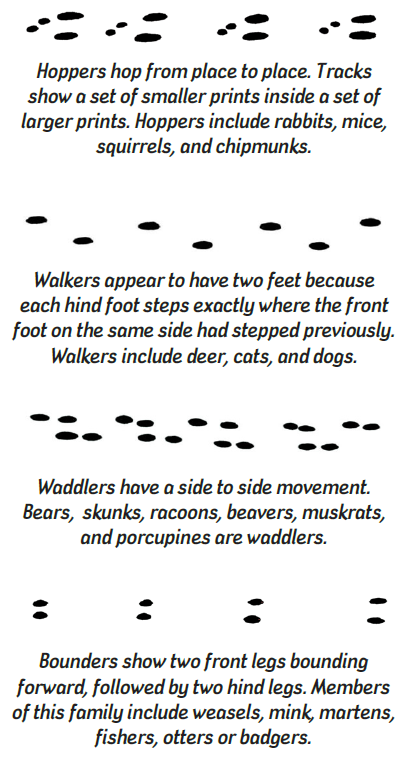By Patrick Burke, Environmental Educator
Snow has fallen during the night while you slept. You wake the following morning, and head to The Woods for a look at the winter wonderland. As you walk along the trail you notice that many creatures have been active throughout the evening. There are large footprints, and small footprints; some are close together, others spread further apart. So many, in fact, that it’s difficult to tell who’s going where and with whom.
One of the easiest ways to sort this out is to use the three P’s method: Place, Print, and Pattern. When you think of place, try and recall what type of birds, and mammals you would see in your yard, neighborhood, or community. Maybe you’ve seen squirrels, chipmunks, rabbits, birds, dogs, cats, or perhaps deer?
Examine the print closely. Each creature that visited the Woods will have its own distinctive foot print. If you’re not familiar with the prints you find, there are multiple resources online, at your local library, or nature center that can help you to identify who they belonged to.
Your last piece to the puzzle is the pattern. When combined with place and print, they can help tie the story together. There are four distinct type of patterns: hoppers, walkers, waddlers, and bounders. So the next time it snows, make your way outdoors, don’t forget your three P’s: Place, Print, and Pattern, so you can read the story that nature’s creatures have left behind


